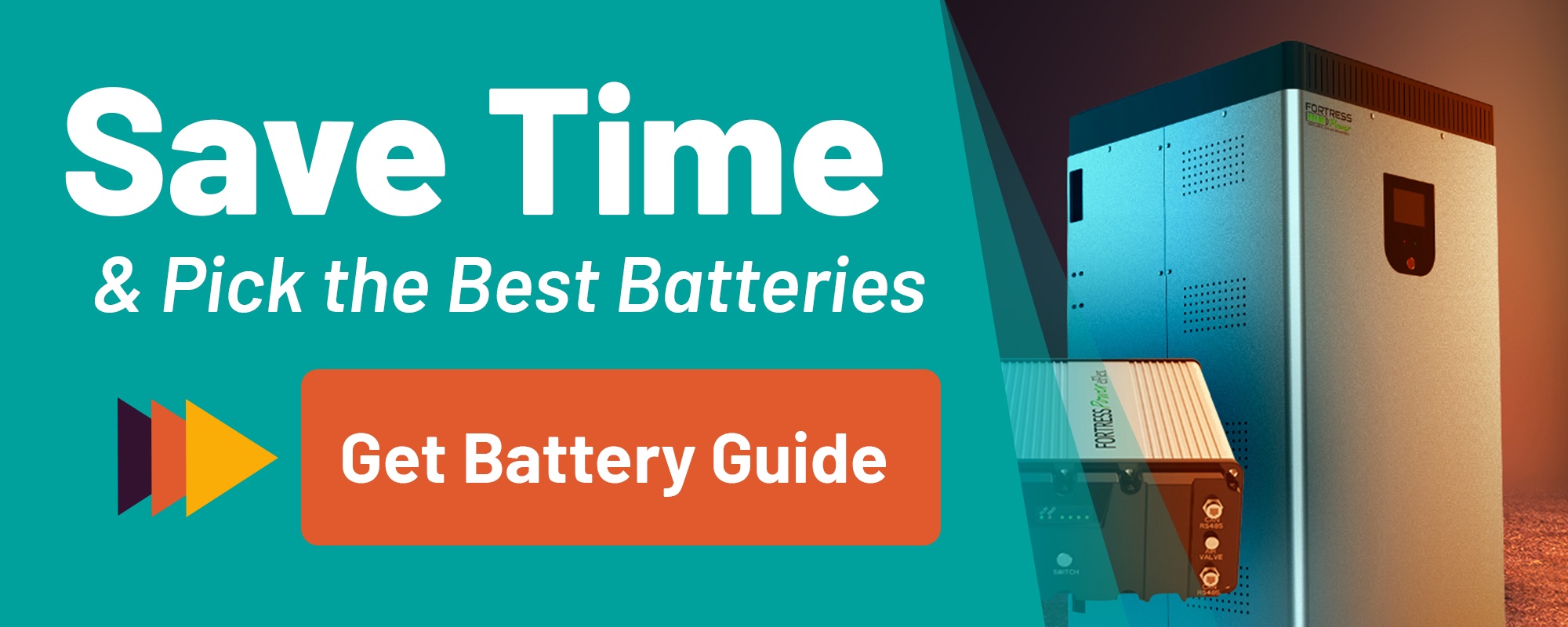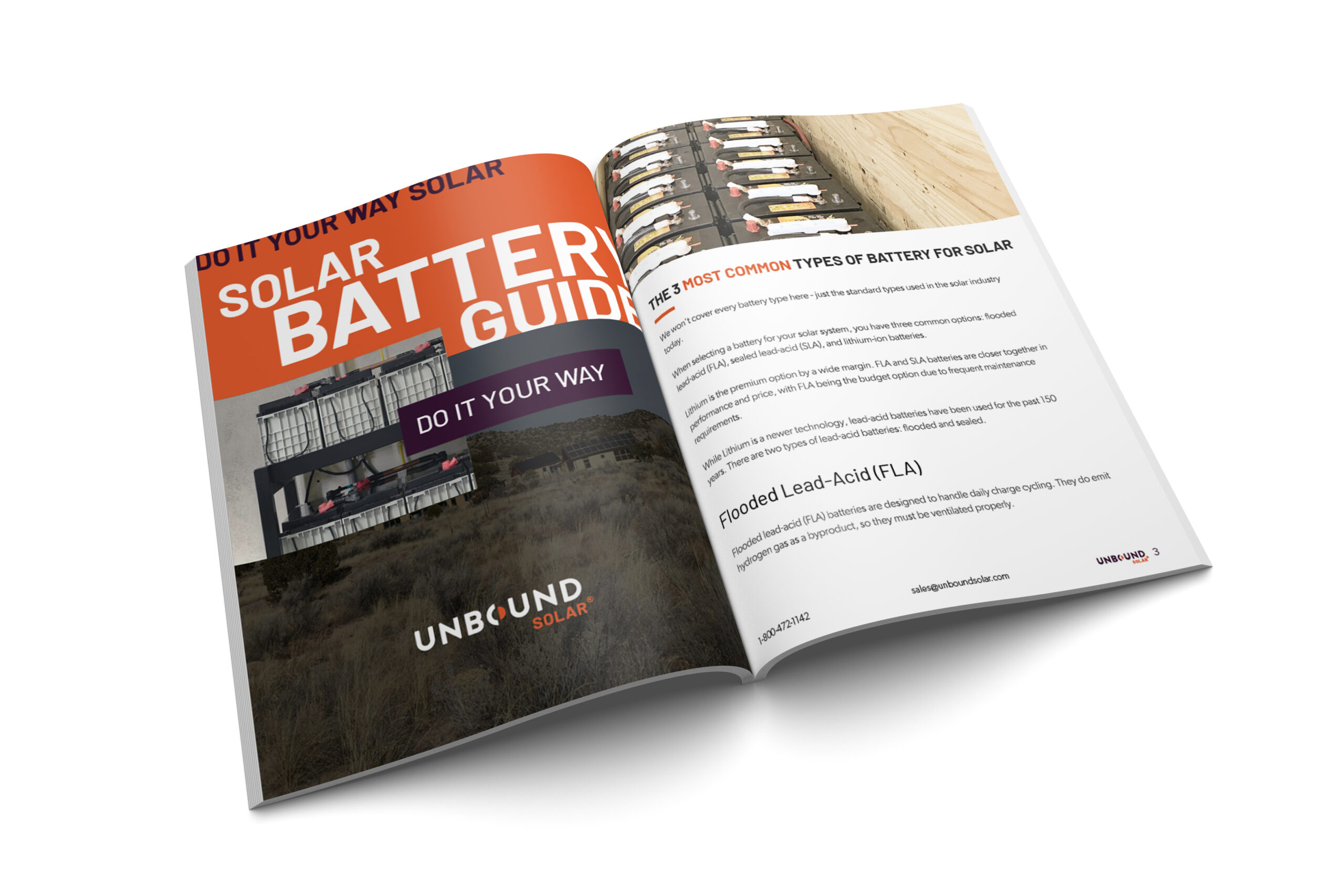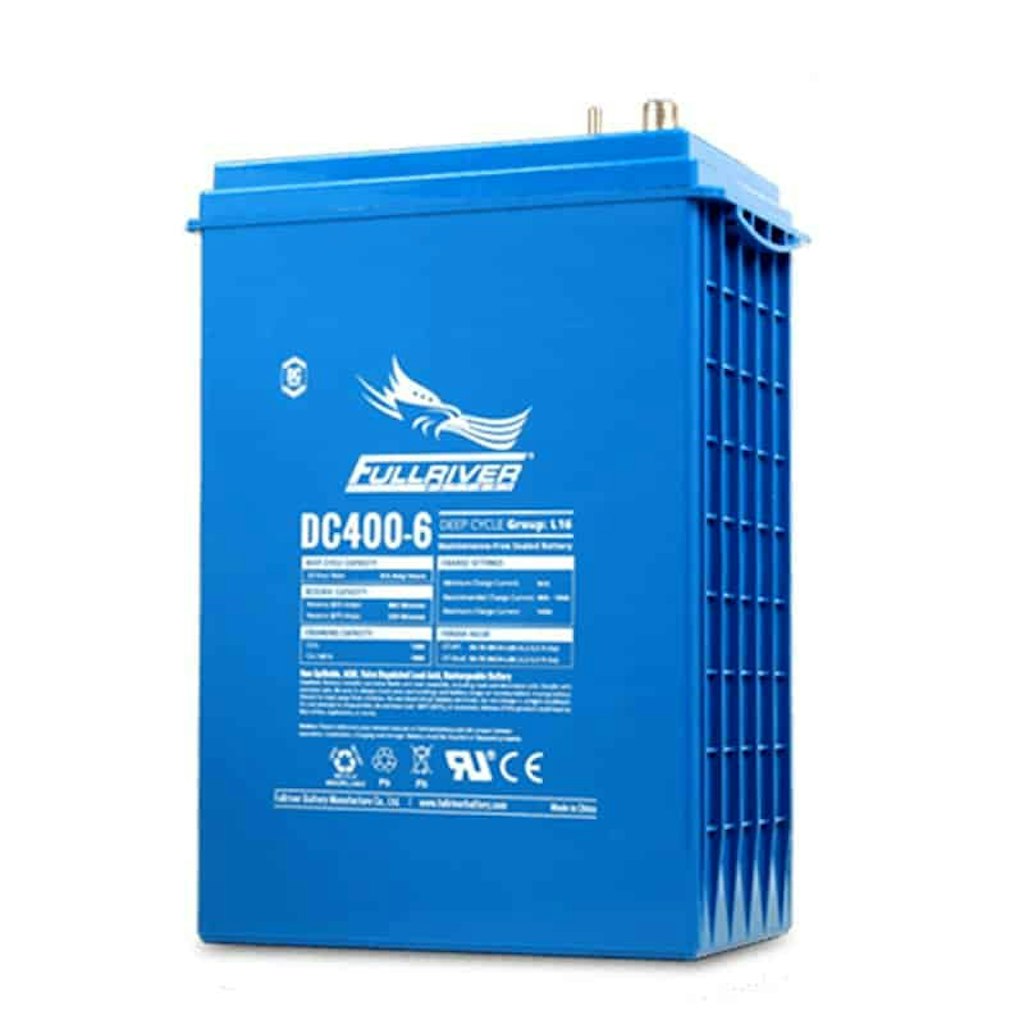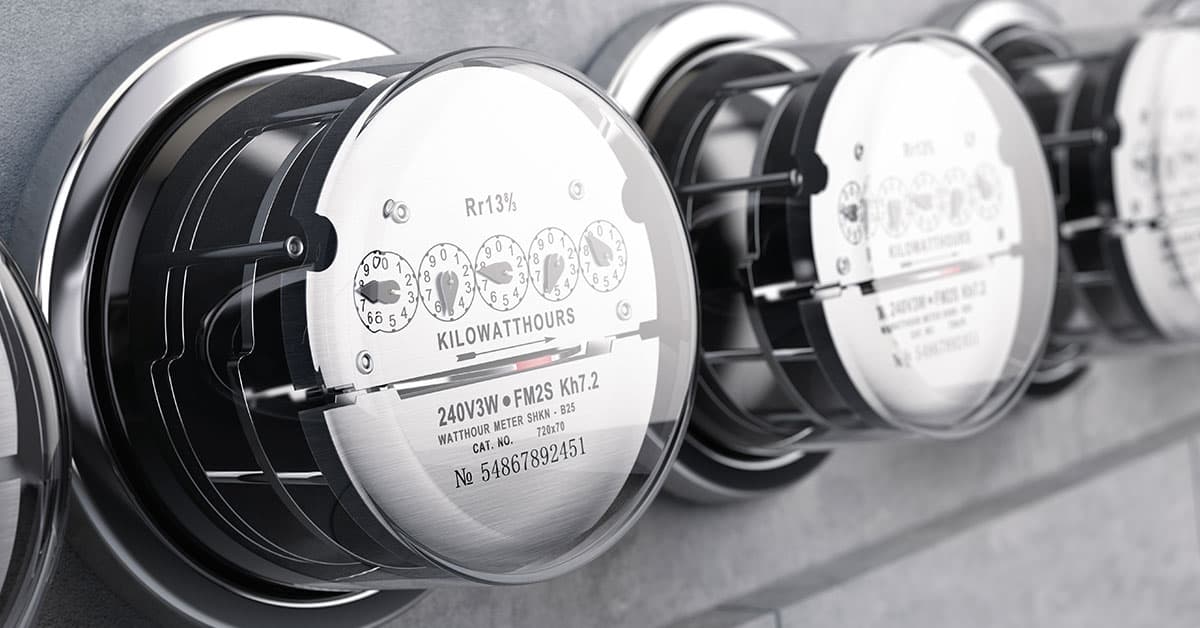Fullriver Battery Review: DC400-6
- 6V / 415ah capacity @ 20 hr. charge rate
- Projected lifespan of 1250 cycles @ 50% depth of discharge
- Convenient option for daily off-grid use
- Ideal for occasional use in remote locations (like a vacation cabin or industrial site) due to maintenance-free nature
Fullriver makes our favorite Sealed AGM (Absorbent Glass Mat) battery on the market: the DC400-6, a 6V battery with 415 ah of capacity.
This battery is ideal in situations where the battery bank may go an extended period of time between charge cycles, like at a vacation cabin or a remote telecom site. It’s also a great option for daily off-grid use if you prefer to avoid the maintenance required of flooded batteries.
This Fullriver battery review will cover over the pros and cons of their DC400-6 Sealed AGM (Absorbent Glass Mat) battery in depth and explain some ideal use cases for AGM batteries.
Price & Specs
- Model: DC400-6
- Price: $582.49 (as of 1/7/20)
- Dimensions (LxWxH): 11.61 × 7.05 × 16.69 inches
- Weight: 123.2 lbs
- Nominal voltage: 6V
- Cycling capacity @ 20 hour rate: 415 ah
- Projected cycle life at 50% depth of discharge: ~1250 cycles
It’s worth noting that Fullriver carries a wide range of 2V, 6V and 12V AGM batteries. We chose to highlight the DC400-6 because it is our best-selling AGM battery with ideal charging characteristics to pair with a broad range of off-grid systems.
You might be better served with another option depending on the scope of your project. For example, 2V batteries work better for larger systems (more on that below). Check out our tips for sizing off-grid systems and chat with your system designer to find the best option for your project.
Pros
Maintenance-Free
The main difference between flooded and sealed lead-acid batteries is that flooded batteries need routine maintenance to keep them in working condition. Every month or so, you need to refill flooded batteries with distilled water, which evaporates during the charge cycling process.
If you are the type of person who loves to get hands-on with DIY projects, you might enjoy the routine maintenance required to keep flooded batteries in good shape.
But most people don’t want their solar system to be the center of their entire life. If you’re the type of person who procrastinates taking your car to the shop for regular tune-ups, you will likely prefer the “set it and forget it” nature of sealed batteries, which don’t require any maintenance check-ups.
If you want a battery that just works without any extra hassle, the maintenance-free Fullriver AGM battery is our top pick.
No Off-Gassing
Flooded batteries emit a gas byproduct as a regular part of their operation. Off-gassing can be dangerous if it builds up in a poorly ventilated area.
For that reason, flooded batteries need to be installed away from living quarters in a well-ventilated enclosure, which can add to overall project costs.
Fullriver’s AGM battery is sealed, and it does not emit gas as part of the cycling process. This means that it can be safely installed indoors without fear of Hydrogen gas buildup.
Install in Any Configuration
Sealed AGM batteries are just that—sealed. You can install them on their side and they won’t leak.

For that reason, Fullriver’s AGM battery is a popular option in RV systems, where vibrations from the road can cause the fluid in the battery to slosh around. Where flooded batteries would spill, the Fullriver AGM stays sealed tight.
They are also more flexible for home installs. If you have a shed or a workshop and need to save floor space, the Fullrivers can be installed sideways without spilling or leaking. That extra bit of versatility is convenient as you plan out your system.
Quality Support & Reputation
Lastly, nobody likes buying from a company that makes it a headache to get support for their products.
We’ve stocked Fullriver for several years and have a great working relationship with them. In cases where our customers have had to contact Fullriver customer support, they’ve been quick and efficient at solving issues.
Generally, we’ve found their support team to be responsive and knowledgeable, which gives us peace of mind that questions and issues will be resolved quickly when they do pop up.
Cons
Higher Cost
At the time of publication, we sell Fullriver’s DC400-6 AGM battery for $583 apiece. That’s a fair bit more than a comparable flooded battery, the Crown CR430, which goes for $332 apiece.
Fullriver projects their batteries to last 1250 cycles at 50% Depth of Discharge (DoD), while the Crown CR430 is good for 1200 cycles at 50% DoD. (A cycle refers to the battery being drained and then recharged again—essentially, one day of use.)
Given the similarities in amp-hour capacity and cycle life, the performance of these batteries is fairly comparable. So why does the AGM cost more?
When I speak with clients, I like to be honest and call it what it is: a convenience upgrade. Flooded batteries require monthly maintenance checks, and there is the potential to come into contact with battery acid while refilling the water, which will burn your skin. AGM batteries are maintenance-free, so you never have to check up on them.
AGM batteries cost more to manufacture because the design is more complex, with the electrolyte suspended in a fiberglass mat, which prevents it from spilling. Essentially, you are paying a premium for the lack of maintenance and the right to forget about your solar system so you can get on with the rest of your life.
If you are the type of person who likes to get hands-on with DIY projects, by all means, opt for flooded batteries. They will deliver similar performance at a much lower cost, so long as you stay on top of a regular maintenance schedule.
Not Suitable for Large Systems
Most off-grid systems tend to be on the smaller side because batteries are quite expensive (the single most costly component of any off-grid system). Off-grid homes tend to take measures to cut down on energy usage, like using efficient appliances and forgoing central heat and A/C units, to get the most out of the battery bank.
Still, I occasionally work with people who need to build large off-grid systems. For these systems, we don’t use the Fullriver batteries because it is best practice to limit 6V battery banks to 2 strings of 8 batteries each (16 batteries total, or 38.4 kWh of storage).
We are limited to 8 batteries in a string because it matches the voltage requirements of the inverter (6V x 8 batteries = 48V string, which matches the nominal voltage of a 48V inverter).
And we don’t run more than 2 strings in parallel because it creates too much resistance between the battery strings. This leads to unbalanced charging and discharging across the strings, which will create uneven charge levels in the batteries.
This isn’t a knock against the Fullriver DC400-6 battery, it’s simply a limitation of the system design process. To solve this issue, we turn to 2V batteries so we can fit more batteries in a string (24 batteries on a 48V inverter).
For large off-grid systems, we turn to the Crown 2CRV1200 or Fullriver DC1150-2.
Ideal Application
Sealed AGM batteries are more convenient and less complex than flooded batteries. Unlike flooded batteries, there’s no threat of ruining your AGM batteries early by neglecting a regular maintenance schedule.
You’ll pay a premium to upgrade to the Fullriver DC400-6 battery, but the tradeoff is that you never have to deal with messy battery maintenance. For many people, ditching the burden of monthly check-ins is well worth the extra cost.
If that appeals to you, the Fullriver DC400-6 is our pick for our preferred sealed battery for daily off-grid use.
There’s another use case where this battery shines: systems that only see occasional use. If you have a hunting cabin that you visit once a month, sealed batteries are practically mandatory.
Flooded batteries will start to self-discharge and if they are not regularly cycled. They would quickly die if you tried to use them in a system where you would not have access to perform regular maintenance.
Sealed batteries have much slower self-discharge. They can sit dormant without upkeep for longer periods and better maintain a charge when you come to visit. That makes the Fullriver DC400-6 our recommended battery for remote systems such as a hunting cabin.
For more info, check out our solar battery guide linked below. If you’d like some help designing a system, feel free to call us at 1-800-472-1142 or request a quote on our website.





